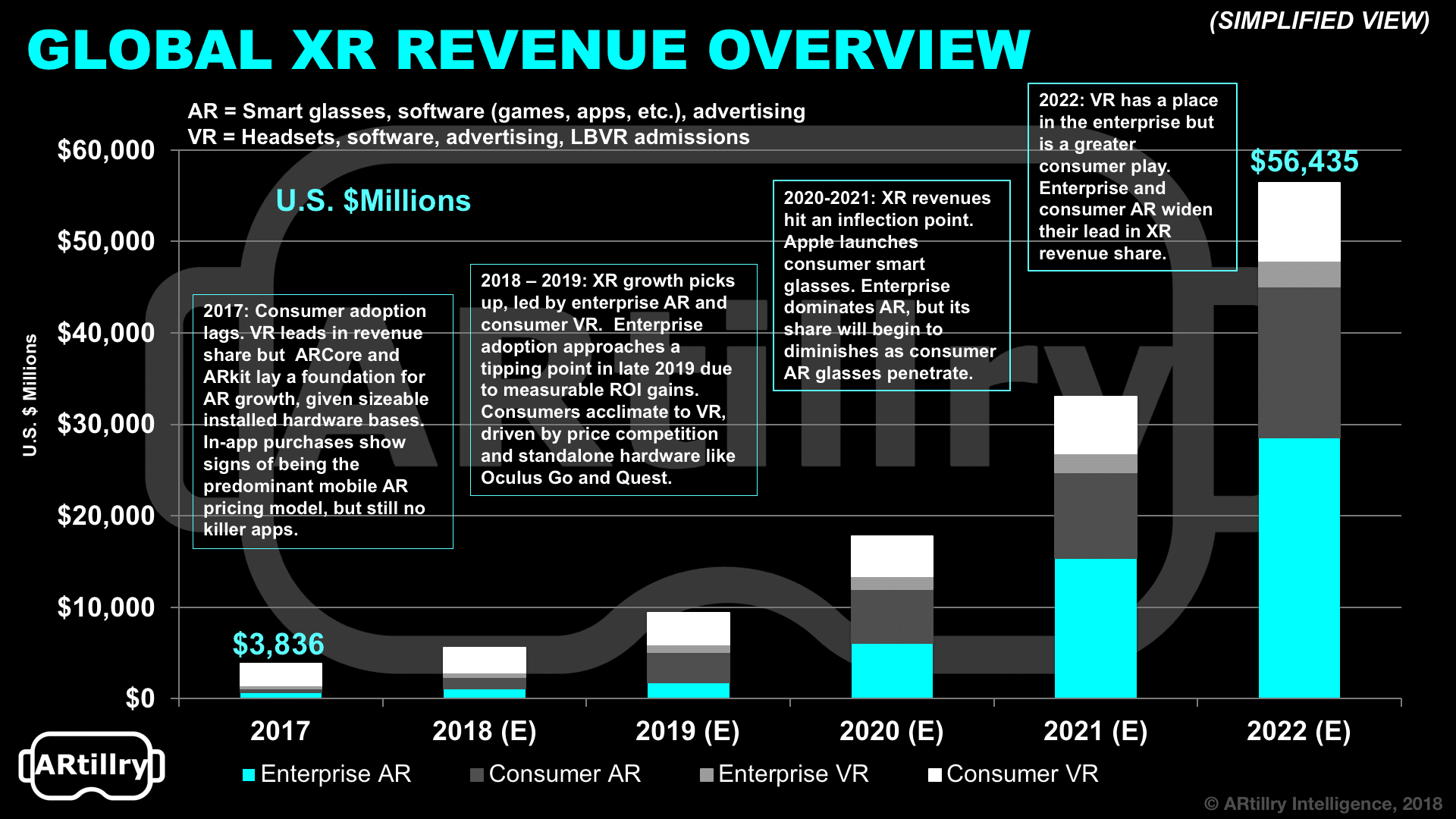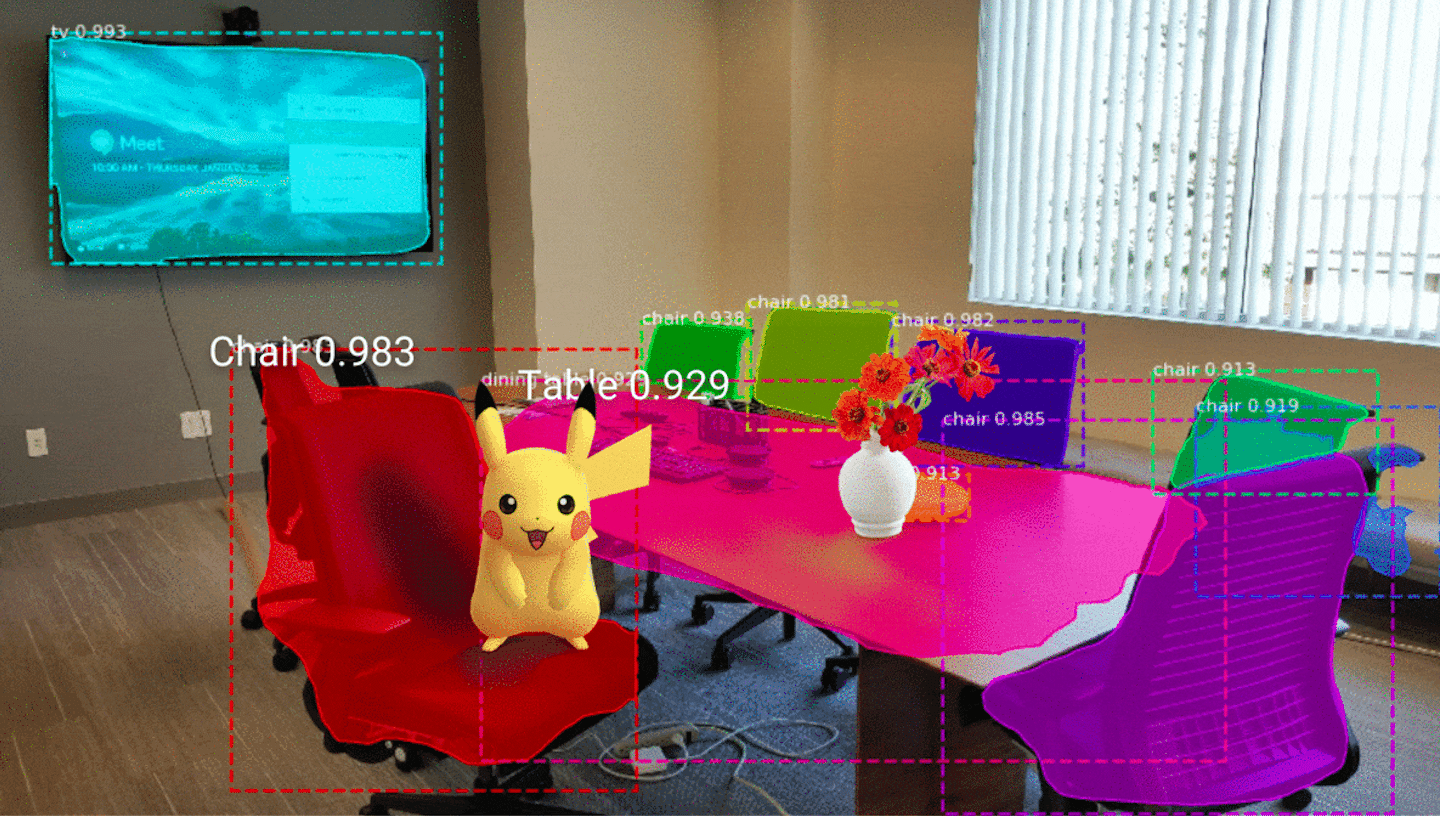
This post is adapted from ARtillery Intelligence’s latest report, XR 2018 Lessons, 2019 Outlook. It includes some of its data and takeaways. More can be previewed here and subscribe for the full report.
2018 was a reflective year for XR. After an exuberant 2016, followed by a corrective 2017, XR industries settled into a moderate pace. This includes reset expectations on the size and timing of AR & VR markets, as well as acceptance that aspirations will take longer to materialize.
But we saw deep-pocketed tech giants charge ahead with XR. With strong contention that XR represents the next computing shift, they’re investing in the future of their platforms by gaining early market share and technological edge. And they’re each attacking XR from different angles.
Despite XR market softness, it was these moves from tech giants that provided confidence in 2018 for the eventual market arrival. Indeed, there’s no bigger vote of confidence in a technology and a market than billions of dollars in long-term bets. We believe this will continue into 2019.

#2. AR Cloud is the Lynchpin.
Picking up where we left off last week in drilling down on our specific 2018 lessons and 2019 predictions, the AR cloud looms large. It came into the collective consciousness in 2018, after it was apparent that AR apps don’t “just work” the way most people expected them to.
Multi-player support, persistence and other functions invoked lots of discussion around the AR cloud as the missing puzzle piece. These functions require a cloud data repository to feed AR devices with spatial mapping data, object recognition blueprints and other AR-enabling resources.
Several AR Cloud startups launched in 2018 and tech giants formulated different flavors of AR cloud strategies. For example, For its Lens play, Google has several foundations for an AR cloud such as object recognition (Images, Street View) and location/spatial data (Maps, Waymo).
In fact, despite the AR cloud’s singular tense, it will be more of a plurality of entities in different functional areas and market segments. Those will map to competencies of existing companies, such as Google’s visual search, Facebook’s social graph, Amazon’s product database, etc..

Picks and Shovels
For those that don’t have such foundations, AR as a service (ARaaS) will emerge to provide AR cloud functionality. The first example, emerging in 2018, was Niantic’s Real World platform. This takes Pokemon Go’s architecture and game mechanics and productizes it for developers.
But for a more concrete prediction, we’re projecting that 2019’s breakout category won’t just be the AR cloud but the broader world of XR enabling-technologies or “building blocks.” That includes tools that streamline or democratize XR creation and distribution, such as ARaaS.
Graphical assets will be a currency in AR commerce and advertising, so creation tools will likewise hold value, such as Amazon Sumerian and Adobe Aero. The AR cloud will broaden and diversify its data sources, even outside of AR such as spatial maps from autonomous vehicles.
“Larger players like Wayfair and IKEA have means and methods they’ve created in-house, because there’s nothing out there that’s scalable, affordable and easy,” said Super Ventures Tom Emrich. “These are the types of startup opportunities that, as an investor, I’m looking at.”
For a deeper dive on 2108 lessons and 2019 predictions, see the full report.
For deeper XR data and intelligence, join ARtillery PRO and subscribe to the free AR Insider Weekly newsletter.
Disclosure: AR Insider has no financial stake in the companies mentioned in this post, nor received payment for its production. Disclosure and ethics policy can be seen here.
